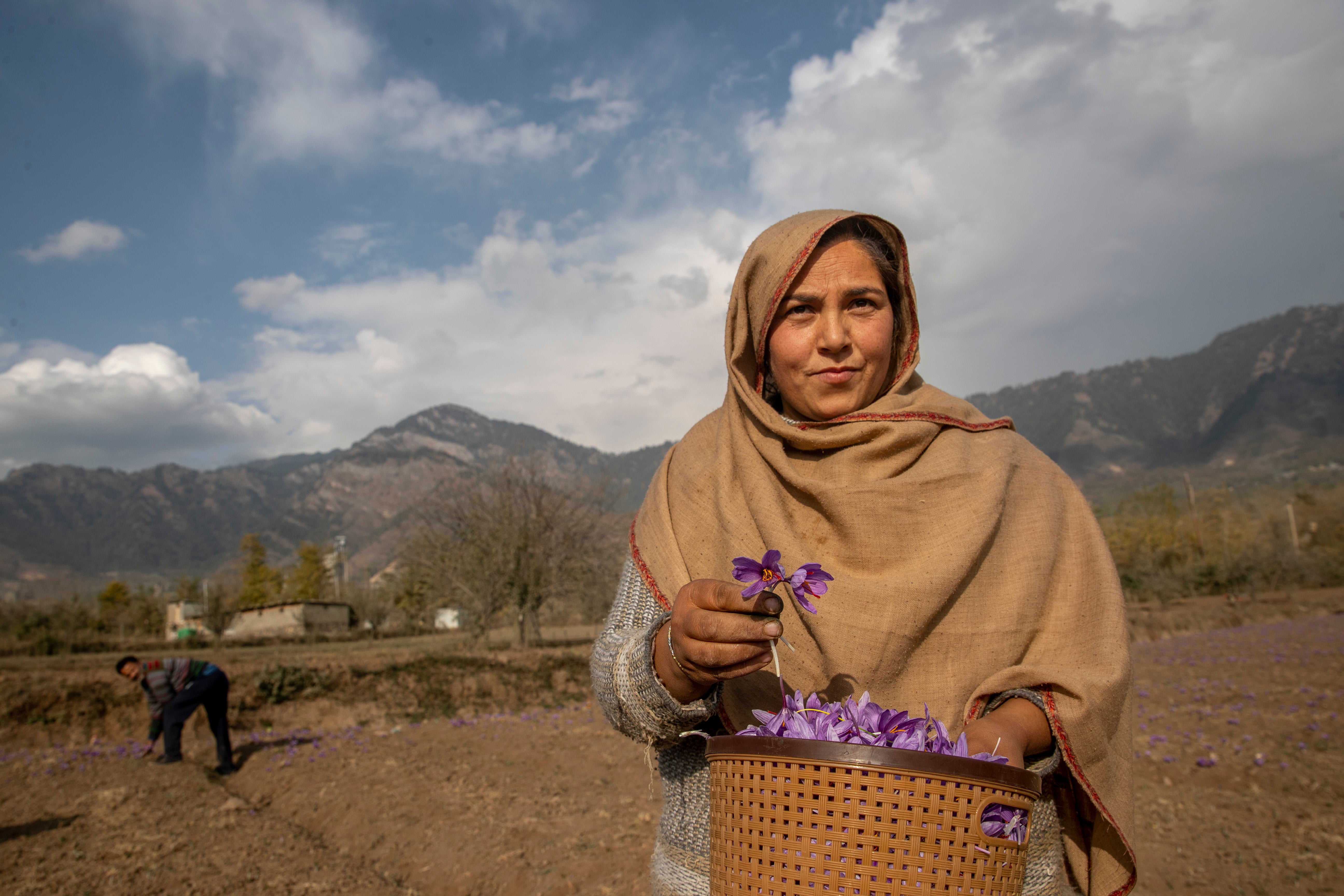AP PHOTOS: From a flower in Kashmir comes a precious spice

Your support helps us to tell the story
From reproductive rights to climate change to Big Tech, The Independent is on the ground when the story is developing. Whether it's investigating the financials of Elon Musk's pro-Trump PAC or producing our latest documentary, 'The A Word', which shines a light on the American women fighting for reproductive rights, we know how important it is to parse out the facts from the messaging.
At such a critical moment in US history, we need reporters on the ground. Your donation allows us to keep sending journalists to speak to both sides of the story.
The Independent is trusted by Americans across the entire political spectrum. And unlike many other quality news outlets, we choose not to lock Americans out of our reporting and analysis with paywalls. We believe quality journalism should be available to everyone, paid for by those who can afford it.
Your support makes all the difference.Cradled by low mountains and spread across a vast expanse of small, fertile fields, a sea of purple flowers opens in Himalayan Kashmir to produce one of the world's most precious spices, saffron.
At the end of autumn, families in the Muslim-majority region race against the clock to harvest the saffron crocus flowers, which bloom for only two weeks a year. Men women and children stoop as they laboriously pick the delicate flowers and place them in wicker baskets.
They next separate the purple petals by hand, and from each flower comes three tiny, delicate stigmas which are then dried in the sun, becoming one the most expensive and sought-after spices.
Across the world, saffron is used in products ranging from food to medicine and cosmetics. A kilogram (2.2 pounds) requires the stigmas of about 150,000 flowers and can easily sell for $3,000-$4,000.
In Kashmir, the spice is a source of pride and has fueled the region’s economy and culture for centuries. But over the years its cultivation has faced troubles due to climate change, poor irrigation facilities and imports of cheaper Iranian saffron.
Strife in the region has also impacted its production and export. For decades, a separatist movement has fought Indian rule in Kashmir, which is divided between India and Pakistan and claimed by both. Tens of thousands of civilians, rebels and government forces have died in the conflict.
To boost saffron's cultivation and export, authorities in Kashmir have set up a high-tech spice park to increase production quality and quantity. But very few farmers find the latest technology lucrative and most still use century-old techniques for picking and drying the saffron.
Most of Kashmir’s saffron is grown in Pampore, a tiny town south of the region’s main city, Srinagar
In Kashmir, the spice is mostly used in Kehwa, a slow-brewed sugary green tea infused with spices like cinnamon and cardamom and garnished with almonds. Saffron is also used in Wazwan, a traditional Kashmiri wedding meal cooked by special chefs that includes more than 30 dishes.